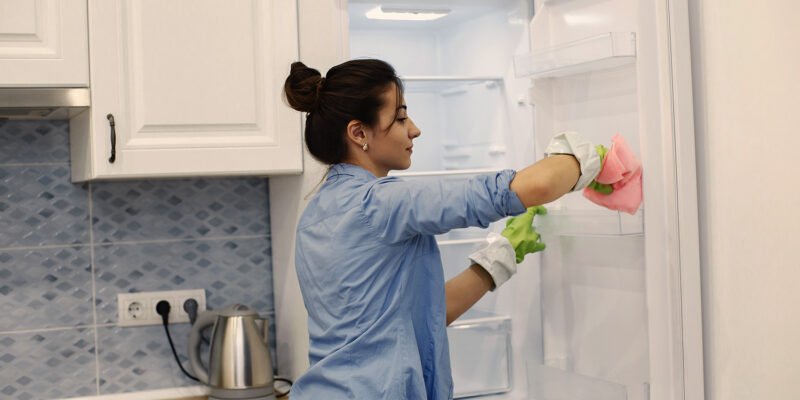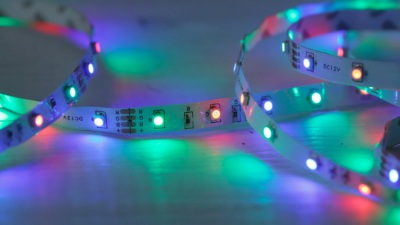It can be very stressful to move into a new home. Large appliances like refrigerators can make moving even more challenging. Moving a refrigerator requires preparation.
The appliance will be kept in good condition as a result. It will be ready to use once you get settled in your new house. Moreover, costly damage will be avoided and food safety will also be considered.
Moving will be simpler and more efficient. This article was written with the help of professional moving boxes and packing material suppliers.
1. Empty the Refrigerator
Remove All Food Items
Empty the fridge of everything. Both perishable and non-perishable items should be taken out. Use any edible items you might still have. Do this to avoid spoilage. Donate any usable non-perishables. Those items could be helpful to someone else. There is no point in just throwing them away.
Check Expiration Dates
Check the expiration dates on items while taking them out. Throw away anything that has already expired. Also, remove the items that are near the expiration date. This is an amazing opportunity to declutter. It also ensures that you only leave fresh and usable items for your new home.
Take a look at the most common problems you can face when moving homes.
2. Defrost the Freezer
Timing
Start defrosting your freezer. Do it at least 24 hours before the move. This way, the ice will have time to melt. The appliance will also reach room temperature.
Unplug the Refrigerator
Unplug the cable of the freezer to start defrosting. Make sure the appliance is completely turned off. This way, you will prevent electrical problems.
Remove Ice
Place towels around the base of the freezer. They will catch water from the melting ice. Another good idea is to place a shallow pan or tray. It will be useful for collecting the water. Also, take out all ice trays and any other removable items.
Clean the Freezer
Once the freezer is defrosted, wipe down the interior to remove any residual moisture. This helps prevent mold and mildew from forming. Use a towel to thoroughly dry the surfaces.
Check our moving tips for first timers and the common mistakes to avoid.
3. Clean and Dry the Refrigerator
Interior Cleaning
Clean the fridge interior. Use a mild detergent. Make your own cleaner if you prefer. Mix baking soda and warm water. A thick paste should form. The cleaner works very well. You can easily remove stains and odours with it.
Remove Shelves and Drawers
Take out the removable shelves and drawers. Wash them separately. Use warm soapy water for cleaning. Dry them thoroughly before placing them back.
Dry Thoroughly
After you have cleaned and placed everything back together, dry the surfaces with a towel. Just like you did with the freezer.
If you’re interested, have a quick read on our helpful article about the 10 improvements you can make before moving to a new home.
4. Disconnect and Secure Loose Parts
Shelves and Drawers
Remove all shelves and drawers if possible, and pack them separately. If they cannot be removed, secure them in place using tape. This will prevent them from shifting during transit and causing damage.
Ice Maker and Water Line
Disconnect the water supply. Do this if your fridge has an ice maker or a water line. Drain the remaining water from the lines. This will prevent leaks. This is a very important step to consider. You will avoid water damage during the move.
Secure Doors
Tie the refrigerator doors with bungee cords or rope. This prevents the doors from swinging open. Make sure the doors are secured before transport. It will also keep the appliance and other items safe from potential damage.
5. Protect the Refrigerator
Wrap the Appliance
Wrap the refrigerator. Use bubble wrap or moving blankets. The exterior will be protected from scratches and dents. Moving blankets provide good cushioning. Bubble wrap is good for protecting delicate parts.
Secure with Tape
Go around the fridge with tape. Do this to ensure the wrapping stays in place. Avoid taping directly on the refrigerator’s surface. This will prevent glue residue. Make sure the tape keeps the protective materials in place.
Use a Dolly
Carefully move the refrigerator to the vehicle on a dolly. First, make sure that the dolly can handle the weight. Secure the appliance with straps. This will prevent slipping. Do this to avoid injuries and damage to your personal belongings.
6. Transport
Keep Upright
Always transport the refrigerator upright. Laying it down can cause damage to the compressor and the other components. Positioning it straight greatly reduces the risk of damage to the whole cooling system.
Secure in Vehicle
The fridge must be securely strapped in the moving vehicle. Use ropes or moving straps. They will keep the appliance in one place. It won’t move around during transit. The refrigerator won’t tip over or shift. This is another important step to avoid costly damage.
7. Setting Up at the New Location
Wait Before Plugging In
Let the refrigerator sit unplugged after moving. Wait for about 4-6 hours. This way, you will make sure that the cooling fluid settles. Doing this will guaranteed way that your fridge will work properly.
Reconnect Water Line
Reconnect the water line if the fridge has one. Make sure it’s secure. Turn the water supply on. Check for leaks or any other issues.
Clean Again
Clean the fridge one more time. Do this before restocking it with products. This way, you will remove any dust or debris piled up during the move. The fridge will be clean and ready for use.
Conclusion
It’s very important to know how to prepare your fridge for a move. It ensures that the appliance remains in good condition. Your refrigerator will also work properly in your new home. Follow the steps from this guide. We promise you food safety, damage prevention, and a smooth transit. Careful preparation and handling will make a successful move guaranteed.













Comments